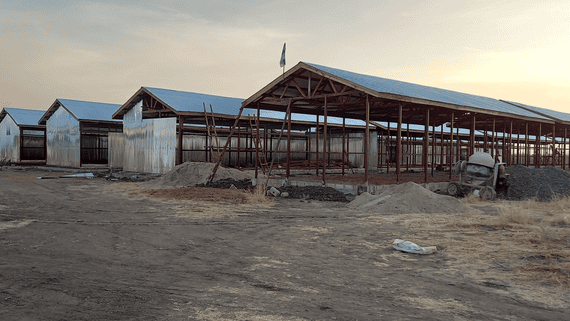SNFI Sectoral People in Needs
SNFI Sectoral Severity of Needs
Needs
The Shelter and Non-Food Item (SNFI) cluster estimates that 2.1 million people, especially IDPs, will need urgent shelter and non-food items (NFIs) support in 2024. The cluster will target 1.4 million people, primarily in Upper Nile, Jonglei, and Unity states where communal violence, floods, and food insecurity are recurrent challenges.
The ongoing Sudan crisis and the upcoming elections are likely to increase needs in some states. Following its 2023-2025 strategy, the cluster will focus on ensuring shelter and NFIs for 1.4 million conflict- and disaster-affected individuals, improving housing conditions for 400,000 people, and enhancing the quality of assistance through feedback mechanisms. Additionally, it considers potential influxes of newly affected populations and their unique requirements, especially if they settle in camp-like settings. Considering the challenges in the supply chain and procurement processes, there is a need to pre-position contingency stocks in strategic locations to expedite responses.
SNFI Sectoral People Targeted
Response
The SNFI cluster will target 1.4 million people based on its vulnerability criteria, with 25 percent being residents, 26 percent returnees, and 49 percent IDPs. The cluster strongly emphasizes the geographical prioritization of its response, focusing on areas with the most severe needs. The distribution of NFIs and shelter materials targets the most vulnerable due to sudden displacement, evictions, loss of household items, and protracted displacement. These include households headed by women, children, the elderly, persons with disabilities, and individuals with limited community connections. The cluster's activities are deeply rooted in accountability, community participation, and ownership, with a keen focus on persons with disabilities, women, and children and potential protection risks. Post-distribution monitoring (PDM) is integral to implementation, ensuring that services are efficient and holistic. Environmental considerations are also integrated, emphasizing sustainable materials and construction techniques to prevent environmental degradation.
Regarding response modalities, 70 percent of the planned response will be provided through an in-kind modality, while the remaining 30 percent will involve CVA. In locations without functional markets, in-kind assistance will be deployed. However, CVA or a hybrid approach will be utilized where markets can support the intervention, and it aligns with protection guidelines.
In terms of logistics, the cluster manages a pipeline that procures and pre-positions stocks across the established hubs to facilitate front-line response. Mechanisms for stockpiling and pre-positioning will be further strengthened to ensure a timely and effective response. Collaboration and integration with other clusters is vital. The cluster will continue to conduct joint needs assessments and work closely with the Protection cluster and government authorities to enhance HLP issues, gender mainstreaming, addressing GBV, and the inclusion of persons with disabilities. Cooperation with the CCCM and WASH clusters will ensure the effective planning and maintenance of IDP sites and community infrastructure.
"The shelter material I received was good the first year, but now it is raining every day and there are leaks. Cash support would help me rent a place to live with my family. I know places that are safer than here."
- 28 year old woman displaced into Abyei Town

Rent County, Upper Nile State
Construction of communal shelters in Renk to temporarily accommodate new arrivals of the Sudan crisis.
NRC/Leju DingiriMonitoring
The SNFI Cluster will maintain rigorous monitoring of shelter needs and responses, utilizing partners' monthly reports, the 5W matrix, and PDM data. PDM helps capture beneficiary concerns, assess risks and barriers, enhance transparency, and evaluate intervention impact. Inter-sectoral and cluster in-depth needs assessments will be conducted to guide the response. The global shelter cluster's performance monitoring tool collects partner feedback to assess the cluster's overall performance and identify areas for improvement, fostering stronger collaboration among partners.

